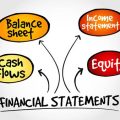Introduction to Expense Tracking
In the United States, managing your finances effectively is a crucial life skill, whether you’re a college student juggling tuition and rent or a professional planning for retirement. One of the most fundamental—and often overlooked—tools for achieving financial stability is expense tracking. By keeping a close eye on where your money goes, you gain valuable insights into your spending habits, which directly impacts your ability to budget wisely, save intentionally, and make informed purchasing decisions. With rising living costs and diverse spending categories unique to American culture—like healthcare, subscriptions, and dining out—tracking expenses isn’t just about numbers; it’s about gaining control over your financial future. Leveraging customizable tools like Excel or Google Sheets makes this process not only efficient but also tailored to your lifestyle, helping you identify areas to cut back or invest more. In this guide, we’ll walk through why expense tracking matters in the U.S. context and how setting up a personalized tracker can empower smarter money management.
Choosing Between Excel and Google Sheets
When setting up a customizable expense tracker, selecting the right spreadsheet platform is key. For American users, Microsoft Excel and Google Sheets are the two most popular choices. Both platforms offer robust tools for tracking spending, but they differ in terms of accessibility, cloud syncing, and device compatibility.
Accessibility
Excel is traditionally part of the Microsoft Office Suite, requiring a one-time purchase or an active Microsoft 365 subscription. It’s widely used in professional environments and offers powerful data analysis features. Google Sheets, on the other hand, is free with any Google account and runs entirely online, making it easy to access from anywhere with internet connectivity.
Cloud Syncing
Google Sheets excels in real-time collaboration and automatic saving to the cloud via Google Drive. This means you can share your expense tracker with family members or partners instantly. While Excel now offers OneDrive integration for cloud storage and sharing, collaboration can be less seamless compared to Google Sheets.
Device Compatibility
Both Excel and Google Sheets support desktop and mobile devices, but their strengths vary. Excel works best on Windows PCs and has a feature-rich desktop app; mobile versions are available but may lack some advanced functions. Google Sheets is optimized for web browsers and has consistent functionality across devices—Windows, Mac, iOS, Android—making it especially convenient for those who switch devices often.
Quick Comparison Table
| Feature | Excel | Google Sheets |
|---|---|---|
| Cost | Paid (Microsoft 365 Subscription) | Free (with Google Account) |
| Cloud Syncing | OneDrive required; less real-time collaboration | Automatic with Google Drive; real-time collaboration |
| Device Compatibility | Best on Windows; mobile apps available | Works well on all devices via browser/app |
| Offline Access | Full offline functionality (desktop app) | Limited offline mode (must enable in advance) |
| Add-ons/Integrations | Extensive with Microsoft ecosystem | Strong with Google Workspace & add-ons |
The Bottom Line for American Users
If you value advanced features and work mostly on a Windows PC, Excel might be your best choice. If you prioritize easy sharing, collaboration, and multi-device access—especially if you’re already using Gmail or other Google services—Google Sheets offers unmatched convenience for building a customizable expense tracker that fits your lifestyle.

3. Setting Up Your Spreadsheet Layout
Designing an effective and customizable expense tracker starts with a logical spreadsheet layout. Below is a step-by-step guide to help you organize columns, categories, and date formatting, tailored specifically for common U.S. expense types.
Step 1: Create Essential Columns
Begin by opening Excel or Google Sheets and labeling your first row with the following standard columns:
- Date – For transaction dates
- Description – Short detail about the expense
- Category – Type of expense (e.g., Groceries, Utilities, Rent, Gas, Dining Out)
- Payment Method – Such as Credit Card, Debit Card, Cash, Venmo, etc.
- Amount ($) – Dollar amount spent
- Notes – Any additional details or reminders
Step 2: Customize Expense Categories
Select categories that reflect your typical American spending patterns. Popular options include:
- Groceries
- Dining Out & Coffee Shops
- Utilities (Electricity, Water, Internet)
- Transportation (Gas, Ride-share, Public Transit)
- Housing (Rent/Mortgage)
- Healthcare (Insurance, Prescriptions)
- Entertainment (Streaming, Movies)
You can use a dropdown list in Excel or Google Sheets to keep category selections consistent. In Google Sheets: Data > Data validation > List of items.
Step 3: Set Up Proper Date Formatting
For accurate monthly and yearly tracking, format your Date column as MM/DD/YYYY—a standard in the U.S. This makes it easy to filter expenses by month or year. In both Excel and Google Sheets: highlight the column > Format > Number > Date > select the desired format.
Pro Tip: Add Monthly Summary Rows
Beneath each month’s data range, add summary rows using formulas like =SUM(), so you can quickly see total spending per category or payment method. This makes reviewing your financial health much easier at a glance.
Final Touches for Customization
You can further personalize your tracker by color-coding categories, freezing the header row for easy scrolling (View > Freeze > 1 row), and even adding conditional formatting to flag high-value purchases. With this structure in place, your tracker will be flexible enough to handle everything from daily coffee runs to major monthly bills—keeping you organized and financially savvy.
4. Adding Formulas and Features
Once your expense tracker layout is ready, it’s time to make it dynamic and user-friendly with Excel or Google Sheets’ built-in features. Leveraging formulas and additional tools not only automates calculations but also makes your data easier to analyze.
Automatic Calculations with Formulas
For a basic setup, you’ll want your sheet to auto-calculate totals and averages. Here are some essential formulas:
| Calculation | Excel Formula Example | Google Sheets Formula Example |
|---|---|---|
| Total Expenses (Column C) | =SUM(C2:C100) | =SUM(C2:C100) |
| Average Expense | =AVERAGE(C2:C100) | =AVERAGE(C2:C100) |
| Total by Category (e.g., “Groceries” in B column) | =SUMIF(B2:B100,”Groceries”,C2:C100) | =SUMIF(B2:B100,”Groceries”,C2:C100) |
Add these formulas at the bottom of your columns or on a summary tab for quick reference.
Using Filters for Easy Data Review
Filters help you drill down into your expenses by category, date range, or amount. To add filters:
- Select your header row.
- Click the filter icon in the toolbar (looks like a funnel).
- Now you can sort and filter data to see, for example, all expenses over $50 or all transactions in a specific month.
Conditional Formatting to Highlight Trends
Conditional formatting visually flags important data—like overspending. For example, you can set up rules to highlight amounts over a certain threshold in red:
- Select your amount column.
- Go to Format > Conditional Formatting.
- Create a rule: If cell value > $200, fill with red color.
Sample Conditional Formatting Rule Table
| Condition | Format Action |
|---|---|
| > $200 | Red fill |
| $100 – $199 | Yellow fill |
Add Drop-Down Menus for Consistency
To avoid typos in categories and ensure cleaner data, use drop-down menus:
- Select the cells in your “Category” column.
- In Excel: Data > Data Validation > List > Enter values (e.g., Groceries, Rent, Utilities).
- In Google Sheets: Data > Data validation > Criteria: List of items.
This keeps your data standardized, making summaries and analysis more accurate. By using these formulas and smart features, your tracker will not only save you time but also provide actionable insights into your spending patterns.
5. Customizing for Your Financial Goals
One of the main advantages of building your own expense tracker in Excel or Google Sheets is the ability to tailor it to fit your unique financial goals and lifestyle. In the U.S., certain spending categories—like splitting household bills, weekly grocery runs, and managing multiple subscriptions—are common, so its helpful to customize your tracker accordingly.
Splitting Recurring Bills
If you share rent, utilities, or streaming services with roommates or family members, create a section in your sheet for recurring expenses. Use separate columns to log the total bill, your portion, and payment status. Conditional formatting can flag unpaid items for easy tracking, while SUM functions can automatically tally your monthly obligations.
Tracking Weekly Grocery Expenses
Americans often shop for groceries on a weekly basis. Add a dedicated category for groceries with subcategories if needed (e.g., produce, meat, snacks). By entering each transaction by date, you can use pivot tables or charts to visualize your weekly or monthly grocery spending trends and identify areas to cut costs.
Managing Subscriptions
With the popularity of streaming platforms, fitness apps, and meal kits in American households, subscription fees can add up quickly. Create a table that lists all active subscriptions, their renewal dates, and monthly charges. Set up reminders using conditional formatting or data validation rules to avoid missed cancellations or duplicate payments.
Personalization Tips
Color Coding for Clarity
Assign specific colors to different expense categories (e.g., blue for housing, green for food) for quick visual reference. This helps you spot high-spend areas at a glance.
Custom Notes & Tags
Add a column for notes or tags so you can remember special circumstances (like holiday shopping or one-time medical bills), making future budgeting more accurate.
Automated Monthly Summaries
Set up formulas to calculate monthly totals per category and compare them against your budget goals. This enables proactive adjustments before overspending occurs.
By aligning your tracker with these typical American spending habits and customizing it to your needs, you’ll gain better control over your finances and make smarter money decisions throughout the year.
6. Reviewing and Updating Your Tracker
Keeping your expense tracker up to date is essential for accurate financial management. To get the most out of your customizable tracker in Excel or Google Sheets, adopt a consistent routine for entering transactions—ideally daily or weekly. Set calendar reminders or use smartphone notifications to prompt yourself to log expenses regularly.
Best Practices for Staying Up to Date
Consistency is key. Block out a specific time each week to review and input receipts, bank statements, or credit card transactions. For shared trackers, make sure all contributors follow the same update schedule. Use data validation tools in your spreadsheet to reduce entry errors, and periodically back up your file to avoid losing valuable information.
Analyzing Your Spending Patterns
At the end of each month, take time to analyze your tracked expenses using built-in Excel or Google Sheets features like charts, graphs, and pivot tables. Look for trends: Are there categories where you consistently overspend? Do you notice seasonal fluctuations? Identifying these patterns helps you pinpoint areas where you can cut costs or reallocate funds more efficiently.
Using Data for Financial Planning
Leverage your expense data for monthly and yearly planning. Compare actual spending against your budgeted amounts to assess if you’re on track with your goals. Adjust future budgets based on historical data—if you consistently spend less in one category and more in another, rebalance accordingly. Many Americans use this approach not only for personal budgeting but also for tax preparation, vacation planning, or saving for big-ticket items like a car or home improvement.
Making Your Tracker Work Long-Term
Remember, an expense tracker is only as useful as the effort you put into maintaining it. Make reviewing and updating your tracker a habit—just like checking your email or social media. Over time, this disciplined approach will give you better control over your finances and help you make informed decisions that support your long-term financial well-being.


